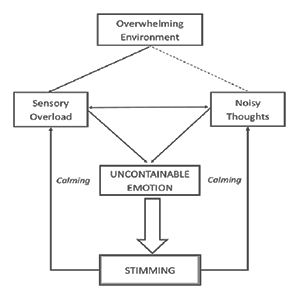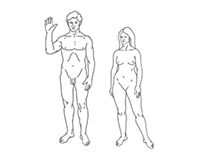Self-stimulatory behavior, also known as stimming, is the repetition of physical movements, sounds, words, or moving objects as a protective response to over-stimulation, in which people calm themselves by blocking less predictable environmental stimuli, to which they have a heightened sensitivity.
Such behaviors (also scientifically known as ‘stereotypies’) are found to some degree in all people, especially those with developmental disabilities and are especially frequent in people on the autism spectrum. People diagnosed with sensory processing disorder are also known to potentially exhibit stimming behaviors. A further explanation views stimming as a way to relieve anxiety and other negative or heightened emotions.
Stimming behaviours can consist of tactile, visual, auditory, olfactory, and vestibular stimming (which pertains to balance). Some common examples of stimming (sometimes called ‘stims’) include hand flapping, clapping, rocking, excessive or hard blinking, pacing, head banging, repeating noises or words, snapping fingers, and spinning objects.
Stimming is almost always present in people on the autism spectrum but does not necessarily indicate its presence. The biggest difference between autistic and non-autistic stimming is the type of stim and the quantity of stimming. In the Diagnostic and Statistical Manual of Mental Disorders, published by the American Psychiatric Association, stimming behavior is described as ‘stereotyped and repetitive motor mannerisms’ and listed as one of the symptoms of autism spectrum disorder.
Different perspectives suggest that stimming involves both sensory and motor functions. Underdevelopment of these sensorimotor functions can result in stimming behaviors produced by the person as a controllable response. One study which interviewed thirty-two autistic adults found that unpredictable and overwhelming environments caused stimming.
Stimming can sometimes be self-injurious, such as when it involves head-banging, hand-biting, excessive self-rubbing, and scratching the skin. While it is difficult to stop stimming entirely, there are ways to reduce time spent stimming and create safer stimming habits for an individual. Managing the sensory and emotional environment while increasing the amount of daily exercise can increase comfort levels for the person, which may reduce the amount of time spent stimming.
The Daily Omnivore
Everything is Interesting



Leave a comment